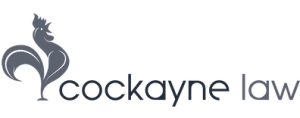Utah Car Accident Laws: A Clear 2025 Guide For Drivers
Utah car accident laws use no fault PIP first, require police reports for injury or $2,500 damage, and follow a 50 percent fault bar. Most injury lawsuits have a four year deadline statewide. Minimum liability is 30/65/25 with $3,000 PIP. If you are searching for a car accident injury lawyer near me, this blog will help you speak with a lawyer with confidence and ask the right questions. We keep the focus on what matters today, in Utah.
Key Points You Should Know
- Utah is a no fault PIP state
- Report crashes with injury or $2,500 damage
- 30/65/25 minimum liability as of 2025
- $3,000 PIP and lawsuit threshold rules
- Four years to file most injury claims
- 50% fault bar can block recovery
- Police reports help prove fault and damages
- UM or UIM helps after hit and runs
- Talk to a lawyer before giving statements
Utah Car Accident Laws At A Glance
Utah blends two systems. Claims start with no fault benefits called PIP, then fault still matters for larger losses. Police must be called when anyone is hurt, someone dies, or total damage looks $2,500 or more.
You may also be required to submit a written report if the Department of Public Safety asks for it. At the scene, keep it simple. You should check for injuries, call 911, exchange names, insurance information, and registration information, as well as take photos.
Request a copy of the police report. These steps protect both health and your claim. Utah raised the minimum auto liability limits to 30/65/25 on January 1, 2025. That is $30,000 for one injured person, $65,000 total per crash, and $25,000 for property damage.
Many drivers carry more because hospital bills rise fast. PIP minimum remains $3,000 per person for medical bills, paid by your own policy first.
Reporting Rules In Utah: When And How To Report
When to call the police?
You should call instantly if anyone is hurt or if damage looks like it could reach $2,500 or more. The law requires notifying law enforcement in those events. Officers create a report that insurers rely on during fault and damage reviews. If the Department of Public Safety asks for a written report, you must submit it within 10 days, so hold on to the case number and your insurer’s claim number.
If the crash seems minor?
Even small impacts can hide injuries. Report when in doubt. Some local agencies need a few business days before the report is ready. Ask how to request it and the fee. Getting that report often speeds your claim.
Why does it matter?
Failing to report when required can bring penalties and also invites disputes later. Insurers and courts look at reports, photos, and medical records to decide fault percentages and payment amounts.
No Fault And PIP In Utah: What Gets Paid First
Utah is a no fault state. That means your own Personal Injury Protection (PIP) pays first for reasonable medical care after a crash, no matter who caused it. The minimum PIP medical benefit is $3,000 per person. PIP can also include wage loss and household services in some policies.
You can step outside no fault and make a claim against the at fault driver when your medical bills go over $3,000 or when the crash causes serious harm such as permanent disability, disfigurement, or certain major injuries. In those cases, you may seek pain and suffering and other losses from the person who caused the crash.
Keep every bill and receipt. Use one medical history for the whole crash so the adjuster sees a clear record. If you search for car accident injury attorneys near me, ask about PIP coordination, liens, and health insurance offsets so you do not leave money on the table.
Fault And Comparative Negligence: How Utah Splits Responsibility
Fault still matters in Utah once you cross the no fault threshold. Utah follows modified comparative negligence with a 50% bar. Your payment is reduced by your share of fault. An injury lawsuit cannot be recovered if the plaintiff is 50% or more at fault. For determining fault shares, insurers study police reports, photos, damage patterns, and road rules.
The more you take a left turn without a safe gap, the more you speed, the more you tailgate, and the more you use your phone while driving, the more you can increase your share. Weather and road hazards can also play a role. Adjusters may split fault when both drivers made errors.
Your job is to give clear facts that match the evidence. Keep a simple timeline, save dashcam clips, and take repair photos. If an insurer pushes a high fault number on you, a lawyer can challenge it with expert review and, if needed, a reconstruction.
Deadlines: Utah’s Statute Of Limitations And Other Time Traps
Most Utah car crash injury claims must be filed in court within four years. Property damage claims often have a 3 year limit. Wrongful death claims are usually two years. These are general rules with exceptions, so do not wait. If a government vehicle is involved, notice rules can be much shorter.
Evidence fades fast. Videos are deleted, cars get repaired, and witnesses move. Start the claim with your insurer quickly. Then collect medical records, wage proof, and repair estimates. If you plan to bring a claim against the other driver, talk with a personal injury lawyer early. So you do not miss key steps such as preserving black box data or sending evidence.
If you find this page while looking for a car accident injury lawyer near me, use it as a checklist and ask the lawyer to map out your exact deadlines.
Contact The Best Car Accident Injury Attorney Utah: Talk With Chris Cockayne At Cockayne Law
When pain, bills, and calls from adjusters pile up, the right guide matters. Chris Cockayne and the team at Cockayne Law help Utah crash victims sort out PIP benefits, fault disputes, medical liens, and settlement talks.
They speak with you in plain terms, set a plan, and handle the insurer while you focus on care. The firm can review your police report, check the $3,000 PIP threshold, and explain how Utah’s 50 percent bar could affect an offer.
They also look for every source of coverage, including UM or UIM for hit and run and short policies on borrowed cars. If needed, they file suit within Utah’s deadlines and line up the records and experts that help prove your claim.
If you are typing car accident injury attorneys or car accident injury lawyer near me, make your next step a direct call. One focused talk can save months of stress.
Final Thoughts
Utah crash law is easier to handle when you break it into steps. Report when required, use PIP right away, track your care, and know that fault and deadlines still control the bigger claim. The new 30/65/25 minimums help, but many families need higher limits or UM or UIM for better safety. Keep records and be careful with statements. Also, ask questions until you feel clear on the next move. If you want local help, a short call with a Utah injury lawyer can steady the path and protect your rights.
FAQs
Is Utah a no fault state and what does PIP pay?
Yes. Utah uses no fault rules. Your own PIP pays first for crash medical care. The PIP minimum is $3,000 per person. Policies can also include wage loss and household services. Keep bills and receipts so payments post without delay.
When can I sue the other driver in Utah?
You can bring a claim against the at fault driver when your medical bills go over $3,000 or when you suffer serious harm such as permanent disability or disfigurement. That is when pain and suffering can be part of your claim.
How does the 50% fault rule work?
Utah cuts your recovery by your share of fault. If you are 50 percent or more at fault, you cannot collect injury damages from the other driver. Fault is based on evidence like the report, photos, and road rules.
How long do I have to file a car accident injury case?
Most Utah injury cases have a four year limit. Property damage claims often last three years. Some claims, like those involving government vehicles, may have shorter notice rules. Ask a lawyer to confirm your exact deadlines.
What if the other driver has no insurance?
Uninsured or underinsured motorist coverage can step in if you bought it. In Utah, UM and UIM are not mandatory, but if purchased they track the new liability minimums. Ask your agent to confirm your limits.
Will PIP cover all my medical bills?
PIP pays first, up to your limit, commonly $3,000. If your care costs more, health insurance or the at fault driver’s liability coverage may pay next, depending on fault and the threshold rules. Keep all records to avoid gaps
Should I talk to the other driver’s insurer?
Be polite but careful. Give basic facts only. Do not guess about pain, fault, or speed. You can ask a Utah lawyer to handle calls, which helps avoid statements that hurt your claim later.







